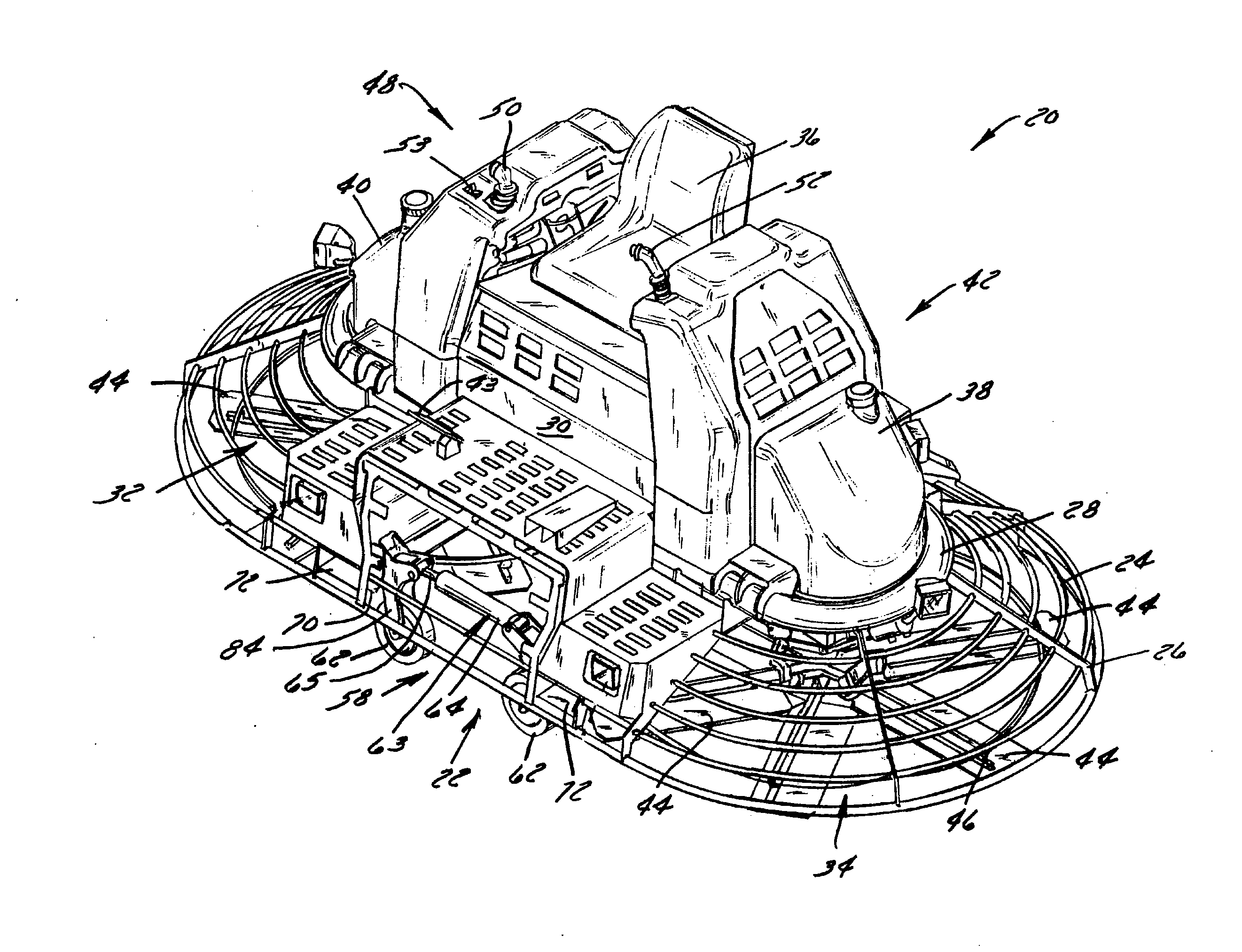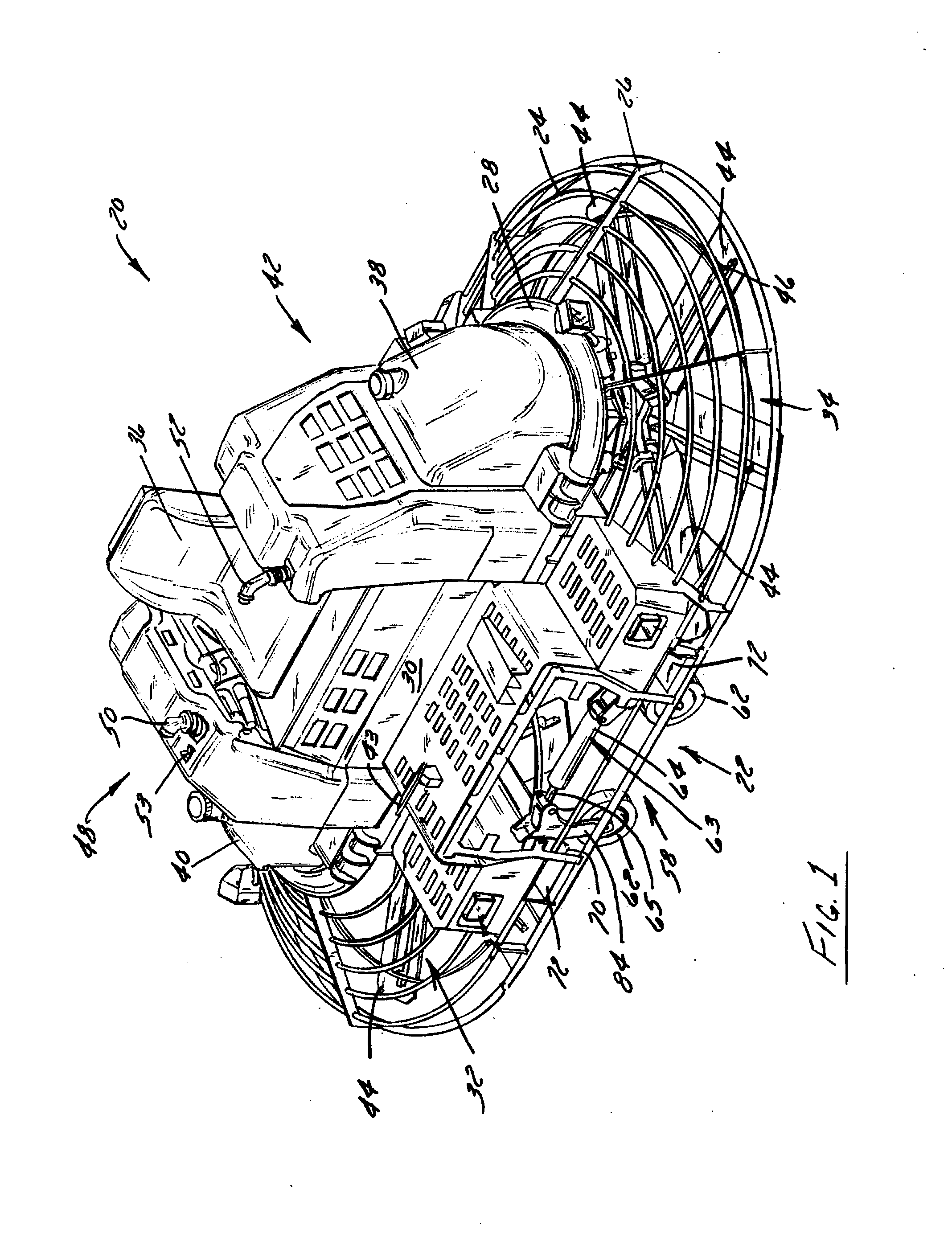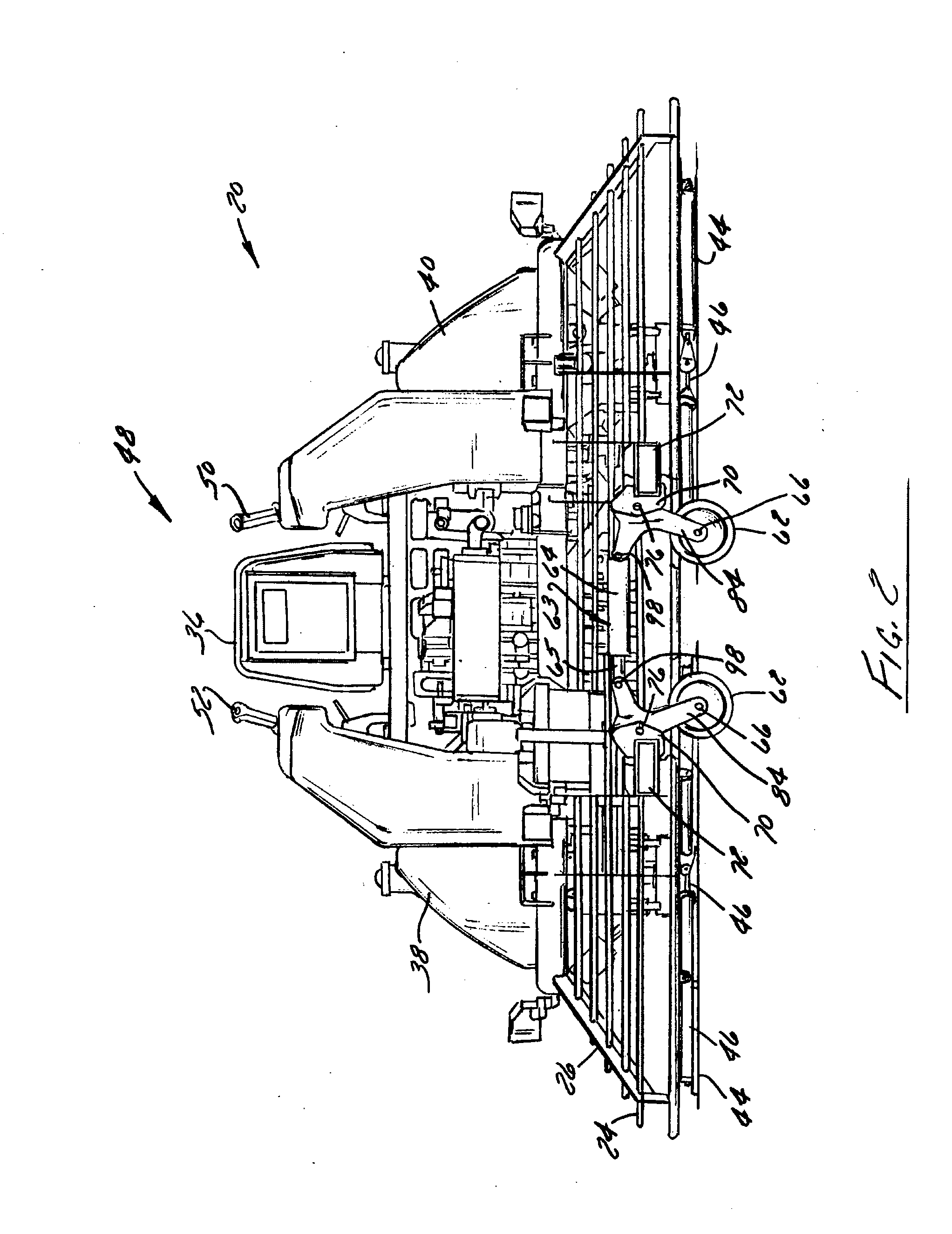Concrete trowel transport system
a technology of transport system and finishing machine, which is applied in the direction of roads, vehicle maintenance, roads, etc., can solve the problems of green concrete not being able to support heavy machinery for several weeks after moving the trowel, the weight of the machine is also detrimental to the non-use transportation of the trowel, and the machine is unable to move the trowel. to achieve the effect of not substantially increasing the weight of the finishing machine and being easy to opera
- Summary
- Abstract
- Description
- Claims
- Application Information
AI Technical Summary
Benefits of technology
Problems solved by technology
Method used
Image
Examples
Embodiment Construction
[0033]FIG. 1 shows a self-propelled riding concrete finishing trowel 20 equipped with a transport system 22 that is constructed according to a preferred embodiment of the present invention and that is positioned nearly entirely beneath the shroud or cage 24 of the trowel 20. Although shown as what is commonly understood as a riding or ride-on trowel, it is appreciated that the present invention is applicable to any powered concrete finishing trowel that cannot easily be manually moved by an operator without substantial physical effort. That is, it is conceivable that riding power trowels having configurations other than that shown, or even walk-behind trowels, could be equipped with a transport system according to the present invention.
[0034]Referring to FIGS. 1-3, and initially to FIG. 1 in particular, concrete finishing trowel 20 in accordance with a preferred embodiment of the invention includes as its major components a rigid metallic frame 26, an upper deck 28 mounted on frame ...
PUM
 Login to View More
Login to View More Abstract
Description
Claims
Application Information
 Login to View More
Login to View More - R&D
- Intellectual Property
- Life Sciences
- Materials
- Tech Scout
- Unparalleled Data Quality
- Higher Quality Content
- 60% Fewer Hallucinations
Browse by: Latest US Patents, China's latest patents, Technical Efficacy Thesaurus, Application Domain, Technology Topic, Popular Technical Reports.
© 2025 PatSnap. All rights reserved.Legal|Privacy policy|Modern Slavery Act Transparency Statement|Sitemap|About US| Contact US: help@patsnap.com



